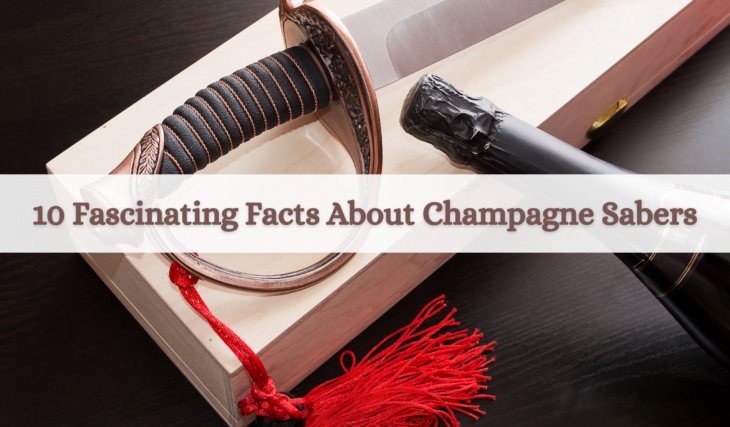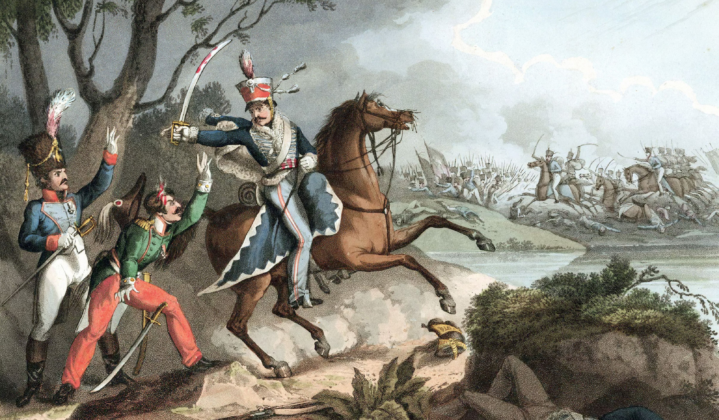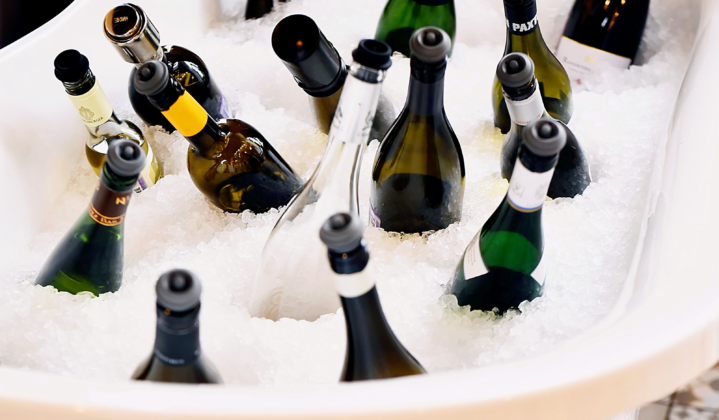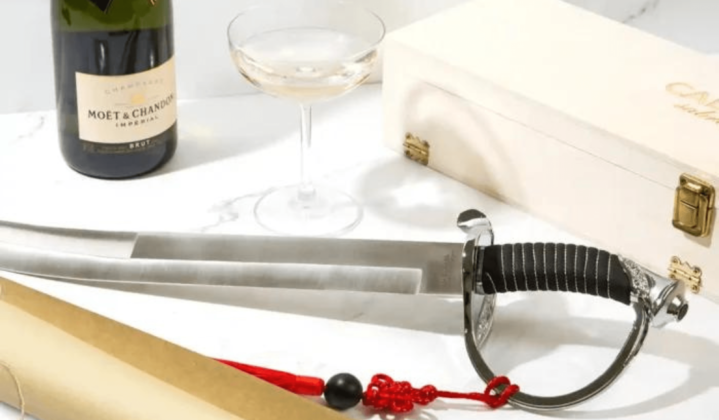10 Fascinating Facts About Champagne Sabers
The art of champagne sabering captures something unique—a blend of tradition, elegance, and pure exhilaration. What began as a victory ritual in Napoleon’s era has evolved into a timeless celebration of life’s most meaningful moments. With a swift stroke, the cork flies, and the air is filled with anticipation, turning any occasion into something extraordinary. But behind every striking saber moment is a wealth of fascinating history and craftsmanship. From its origins to the finer details of technique, champagne sabers carry a legacy worth exploring.
In this article, we’re diving into 10 captivating facts that will deepen your appreciation for this celebrated ritual and give you insight into what makes it so special.
At California Champagne Sabers, we take pride in continuing this remarkable tradition. Each saber we create is a reflection of the intricate history and expertise that makes sabering such a dramatic and sophisticated experience.
From how sabers are designed to the perfect angle for the flawless strike, these facts shed light on the finer points of champagne sabering. Whether you’re an enthusiast or simply intrigued by this timeless practice, these facts offer a closer look at how this ceremonial art has evolved and continues to captivate at every celebration.
1. Origin Linked to Napoleonic Wars
The practice of champagne sabering has roots that trace back to the Napoleonic era, where French cavalrymen, known as Hussars, turned the act into a symbol of victory. After a successful battle, these soldiers would celebrate by slicing the tops off champagne bottles with their sabers, a dramatic gesture that reflected both their triumph and the elegance of French tradition. It wasn’t just about the taste of champagne—it was the spectacle of the moment, a visual declaration of success on the battlefield.
As time passed, what began as a military celebration evolved into a tradition that transcended war. Champagne sabering has since become a ceremonial act for marking personal victories and special occasions. Whether at weddings, parties, or milestones, the striking of the bottle with a saber serves as a tribute to the grandeur of those early celebratory moments. The tradition of the Hussars lives on today, not on the battlefield, but in the excitement of life’s finest moments.
2. Sabering Can Only Be Done on Champagne and Sparkling Wine Bottles
The magic of champagne sabering lies in the pressure contained within bottles of champagne and other sparkling wines. Unlike still wines, which lack the necessary internal pressure, champagne and sparkling wines are uniquely suited for this dramatic tradition. The carbonation inside these bottles builds up, creating just the right amount of force to send the cork flying when struck with a saber. Without this pressure, a saber strike would simply break the glass rather than create the iconic pop.
This exclusivity to champagne and sparkling wines adds an air of mystery to the tradition. Only bottles with the right conditions can produce the desired effect, making the act of sabering feel even more special. It’s not just about opening any bottle—it’s about understanding the physics behind the pressure and choosing the right one to transform a moment into an unforgettable spectacle.
3. Sabers Are Blunt, Not Sharp
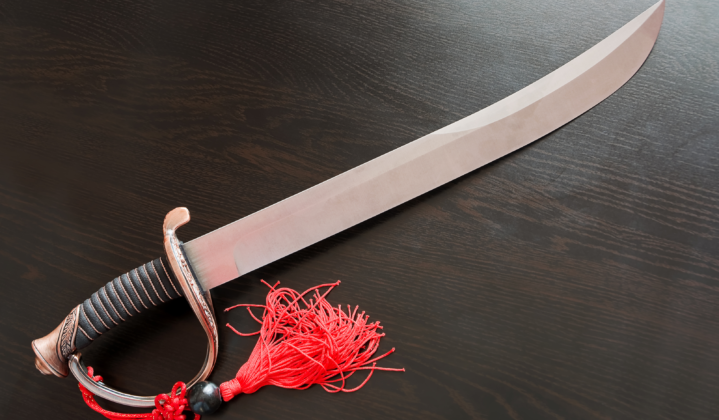
While the act of sabering may appear to require a razor-sharp blade, the truth is quite the opposite. Champagne sabers are intentionally blunt, designed to break the bottle’s lip through impact rather than slicing it. The force of the strike, coupled with the pressure inside the champagne bottle, is what causes the cork to shoot off. It’s a calculated moment of tension and release, where precision triumphs over sharpness.
This design choice is no accident—sabers are meant to make a bold statement without the danger of cutting through glass. The focus is on the technique, not the blade’s edge. Sabering is as much about finesse as it is about force, and the blunt nature of the saber adds a layer of safety and elegance to the ritual. A properly executed saber strike is a testament to skill and tradition, rather than brute strength or sharpness.
4. Sabering Is Rooted in Prestige and Ceremony
From the grand courts of Europe to today’s most elegant events, sabering has always been linked with moments of prestige. Historically, it was performed to celebrate military victories, symbolizing triumph and power. Today, the act remains a powerful ceremonial gesture, often reserved for weddings, galas, and other significant milestones. Each strike represents not just the opening of a bottle, but the marking of a moment that deserves to be remembered.
The association of sabering with ceremony gives it a gravitas that few other traditions can match. It’s an act that elevates any occasion, instantly transforming a gathering into something more profound. Whether it’s the toast at a luxurious event or the beginning of a personal celebration, sabering carries with it a sense of importance that lingers long after the last drop of champagne has been poured.
5. A 45-Degree Angle Is Key to Success
Achieving the perfect saber strike relies heavily on positioning. Experts agree that holding the bottle at a 45-degree angle is essential for a clean, flawless strike. This angle helps direct the force of the saber along the seam of the bottle, ensuring that the cork and collar detach smoothly. The bottle’s natural pressure does most of the work, but the proper angle guarantees that the strike is as efficient as it is dramatic.
Following the bottle’s seam with the saber is also crucial. By guiding the blade along this line, sabering becomes more about precision than power. It’s a delicate balance, requiring both confidence and accuracy. The 45-degree angle isn’t just a technical detail—it’s a key component of the tradition, turning what might seem like a simple task into a refined, skillful gesture.
6. The Cork Can Reach Speeds of 60 mph
When the saber strikes, it’s not just the bottle that reacts—the cork becomes a projectile, flying off at speeds of up to 60 mph (97 km/h). The sheer force generated by the pressure inside the bottle propels the cork into the air with surprising velocity, adding to the excitement and drama of the moment. It’s an exhilarating sight, but also a reminder of why safety is key when sabering.
This element of speed turns sabering from a simple act into something dynamic. The cork’s rapid exit adds to the celebratory atmosphere, turning heads and evoking gasps of amazement. But while it’s thrilling, the speed also highlights the importance of striking in a clear, open area—because at 60 mph, the cork can cover quite a distance in the blink of an eye.
7. Sabering Requires Chilled Bottles
The temperature of the champagne bottle plays a critical role in the success of sabering. A chilled bottle, typically at around 45°F (7°C), ensures the right internal pressure to facilitate a clean strike. This temperature stabilizes the glass and keeps the champagne pressurized, preventing the bottle from shattering or cracking upon impact. The chill of the bottle becomes an unspoken partner in the sabering ritual, quietly ensuring that the spectacle goes off without a hitch.
When bottles are too warm, they become fragile, and the sabering experience can take an unfortunate turn. The glass may crack, or the strike may lose its intended precision. Properly chilling the bottle not only heightens the drama of the moment but protects the integrity of the process itself. For a smooth, unforgettable saber strike, ensuring the bottle is cold is as essential as the saber itself.
8. A Saber Strike Must Be Clean and Quick
Precision is the heart of the perfect saber strike. The motion must be swift and smooth, slicing cleanly along the neck of the bottle to release the cork without damaging the glass. Sabering isn’t about brute force; it’s about confidence and fluidity, where the speed of the strike ensures the cork and neck detach in one seamless motion.
A clean saber strike doesn’t just protect the bottle—it protects the elegance of the ritual. Jagged edges or missed strikes can disrupt the flow, while a flawless cut maintains the air of sophistication that sabering is known for. Timing, accuracy, and a steady hand are essential for keeping the moment sharp, quick, and undeniably impressive.
9. Modern Sabers Are Crafted for Aesthetics and Functionality
Today’s champagne sabers are not only tools—they are works of art. Crafted from high-quality materials like stainless steel, these sabers combine function with an aesthetic appeal that makes them as much a decorative piece as a practical one. Many modern sabers feature intricately designed handles, often inspired by historical or cultural motifs, adding an extra layer of elegance to the ritual.
These sabers are more than just instruments for opening bottles—they are collectible items that speak to craftsmanship and tradition. The balance between their ceremonial role and their visual appeal ensures that a champagne saber is not only functional but also a statement piece. Whether displayed or used, it carries with it the weight of history while appealing to the modern eye.
10. The Tradition Continues to Grow in Popularity
Champagne sabering is experiencing a resurgence, with its popularity steadily increasing over the past decade. As more people seek out unique ways to celebrate, sabering has found its place in modern culture, often featured at weddings, New Year’s Eve celebrations, and luxury events. Online searches for “champagne sabers” have spiked, particularly during festive seasons, showing that this tradition continues to capture the imagination of a new generation.
This growing interest speaks to the timeless allure of sabering. In a world filled with fleeting trends, sabering offers something lasting—an experience that connects people to history while providing an unforgettable moment. Whether it’s the influence of social media or a collective desire to make celebrations more memorable, the act of sabering has firmly established itself as a symbol of modern-day luxury and tradition.
At California Champagne Sabers, we are passionate about the history and craftsmanship behind each saber. The facts explored in this article shed light on the intricacies and traditions that make champagne sabering so captivating. From its roots in victory celebrations to the precision required for a perfect strike, these insights highlight why this ritual remains a cherished part of special occasions. Our commitment to upholding this rich legacy ensures that the art of sabering continues to inspire awe and excitement, connecting the past with the present in every celebration.
